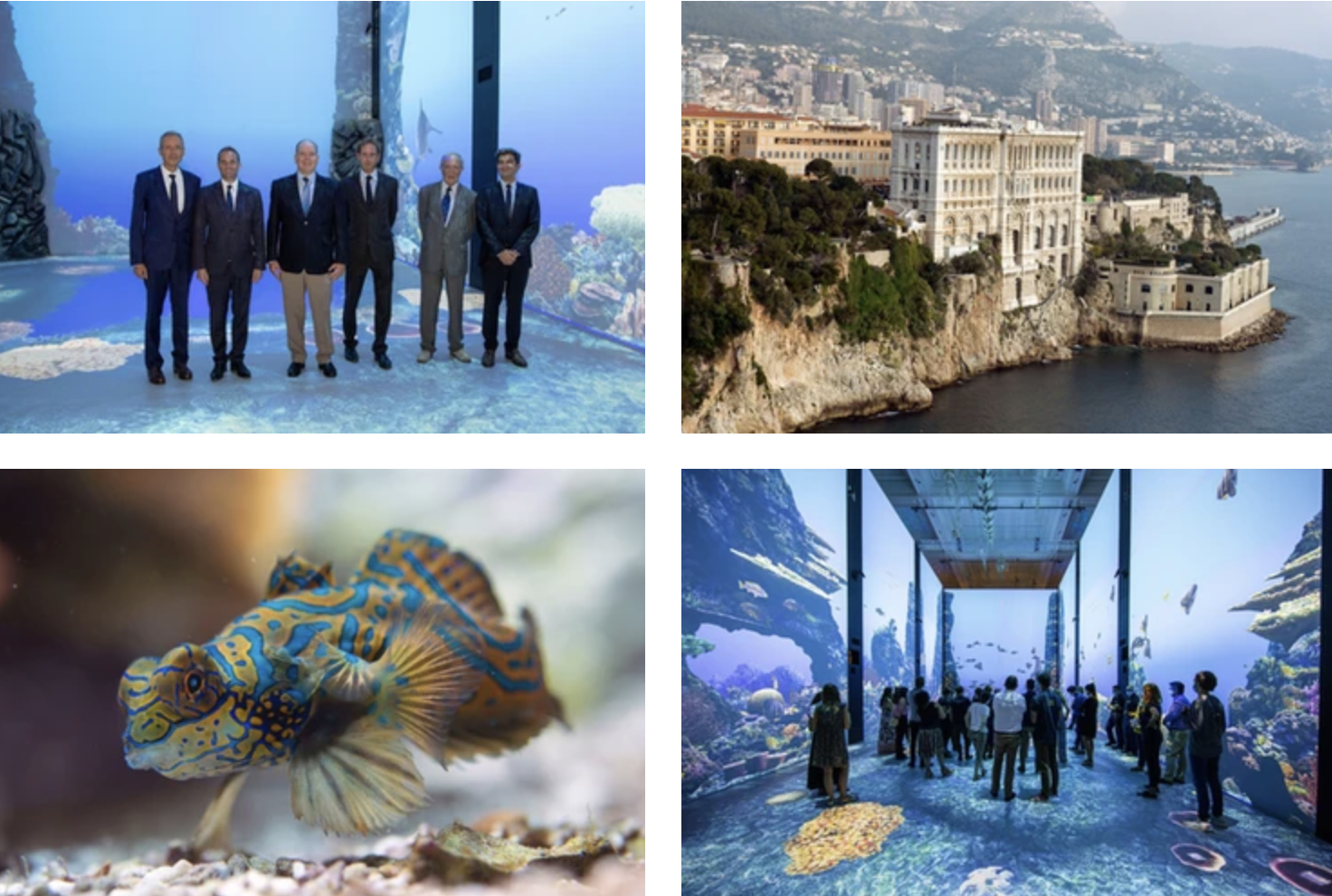After a delicious breakfast in front of a peaceful view of the Mediterranean Sea, at Blue Bay in Monte Carlo Bay Hotel, with Prince Michel of Yugoslavia, I decided to take the plunge into a full “IMMERSION” for a dive experience into the iconic Great Barrier Reef. What better to do in a Principality flirting with the sea everywhere and where its Prince HSH Albert II of Monaco dedicates his life to the preservation of the Oceans through the projects of the Foundation Prince Albert II of Monaco? Continuing his ancestor’s work, the late Prince Albert I, nicknamed “The Prince of the Seas” modern Poséidon explorer, who founded in 1906 the Oceanographic Institute, the foundation recognized itself as being of public utility, HSH Prince Albert II, Honorary President of the Oceanographic Institute, contributes to Monaco’s international commitment to the Ocean preservation. Backed by the legendary Rock of Monaco at the front of the charming restaurant “Les Perles de Monte Carlo”, where I will meet up after my visit some good friends for an exquisite fish and seafood lunch, paired with a fruity organic white wine in order to extend the inspiration of such an unique exhibition. Brice Cachia and Frédéric Rouxeville, two biologists, launched their project to refine marine products in 2011, in a region where the oyster-farming tradition is almost non-existent, but are now locally grown. Full «Immersion» at the Oceanographic Museum of Monaco you are invited on a Journey with Neptune “Because of their vulnerability to acidification, because their importance in our global ecosystems (…) corals should today more than ever, be at the heart of our strategies.“ HSH Prince Albert II of Monaco The purpose of such a relevant exhibition consists in showing the importance of the Oceans and the barrier of Corals for life preservation consciousness and our future. As Robert Calcagno, CEO of the Oceanographic Institute, explains, this new interactive installation has propelled us into a whole new format, never before offered at the Oceanographic Museum. The exhibition will last at least one year from now, so it is an excellent opportunity to plan a visit to discover this neptunian universe by yourself or in family, the spectacular installation fitting all ages in search for beauty and emotional experience. A dive into the underwater odyssey animated by a modern Jules Verne explorer‘s Spirit. As Jonas‘s initiatory journey into the whale, the interactive path offers the opportunity to contemplate amazing fishes, their emotions, their interactions in a mysterious quietness and unusual scenography. Nora Matthey de l’Endroit has assumed brilliantly the delicate mission of the scenography and art direction with the support of the Scientists, offering thus a fantastic way to discover the Australian Sea and its fauna, biggest ecosystem of the world, in the North East of Australia. With its 2300 km in length and 348 000 km2 in area, the Great Barrier Reef is the largest coral reef system of the planet. At the origin of this feat, small animals who happen to be great engineers: reef-building corals. They secrete a calcareous skeleton, making them the principal creators of these underwater constructions. Commonly called “hard corals”, there are currently about 1600 species. “Because of their vulnerability to acidification, because their importance in our global ecosystems (…) corals should today more than ever, be at the heart of our strategies.“ HSH Prince Albert II of Monaco

Image : HSH Albert II of Monaco, Honorary President of the Oceanographic Institute, during the exhibition, Immersion, 2020. Above: coral reef fauna image of group of ocellaris clownfish.

Since 1981, the great Barrier Reef has been classified at a UNESCO World Heritage Site, joined in 2008 by the New Caledonia double barrier reef. The Civilization of Ancient Rome projected towards the sea, has always attributed a relevant importance to coral. The young “putto” angel was represented with a branch of coral collar as a talisman and emblematic link to the Sea, symbol of Life as the Botticellian Venus coming to life from a shell embarkation of the Sea. Above the art visual language and the symbol of coral in its representation, the Scientists have put the emphasis on the coral vulnerability and the necessity to preserve this barrier environment for the future of our planet Earth. Beside the exhibition, the visit of the Oceanographic Museum is a mere enchantment with its solemn classical architecture, its Cabinet de Curiosités, without losing yourself, admiring the view of the sea, you could be captivated by the charm of the song of the sirens… Image : HSH Prince Albert II of Monaco, Honorary President of the Oceanographic Institute, and his team, during the exhibition, Immersion, 2020 with the team of the Institute. Below: coral reef fauna images of fish and visitors during the Immersion.

Practical information
Opening dates & times of the Oceanographic Museum IMMERSION
Open every day (except the Formula Grand Prix weekend and December 25th )
From 10 am to 7pm: April, May, June, September
From 9.30 am to 8pm: July, August
From 10am to 6pm: January, February, March, October, November,
December
Adult (from 18 years old) 16 euros
Student (valid card) 10 EUROS
Child (4 to 17 years old inclusive) 10 euros
People with disabilities 7euros
Oceanographic Museum of Monaco
Avenue Saint Martin
MC 98000 Monaco
+377 93 15 36 00
Restaurant Les Perles de Monte Carlo
Seafood restaurant
(Front of the Museum)
Port de Fontvielle
Quai Jean-Charles Rey
98000 Monaco
+377 97 77 84 31
www.perlesdemonaco.com
I quite like reading through a post that will
make men and women think. Also, thanks for allowing for me to comment!
Woah! I’m really loving the template/theme of this site.
It’s simple, yet effective. A lot of times it’s very difficult to get that « perfect balance » between user friendliness and visual appearance.
I must say you’ve done a amazing job with this. Also, the blog loads very fast
for me on Safari. Superb Blog!